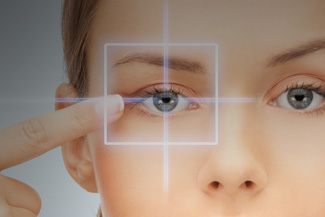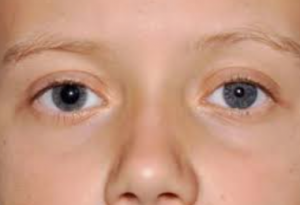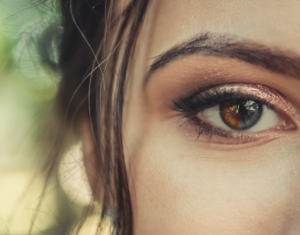Up to 20% of healthy people have pupils that are different sizes – some are normal but others are signs of a serious health issue.
The pupil is the dark-colored and circular opening in the center of your eye, that is surrounded by the iris, the colored part of the eye.
The function of the pupil is to control the amount of light that is let into the eye.
Is the size of my pupils important?
Yes.
Pupils that are unequal, one is larger than the other, can be a sign that something is wrong in the brain.
The size of your pupils and how they react to light can help in the diagnosis of certain medical conditions. For example, if you’ve been hit in the head and one or both of your pupils are dilated (larger than normal), it can indicate a serious brain injury.
A ‘swinging light test’ can also be used by your doctor to see if both your pupils react to light in the same way. The doctor may use pharmaceutical eye drops to dilate your pupils and make it easier to see into your eyes, which might show this condition.
Conditions that affect the pupils
There are several conditions that can affect your pupil size:
1. Anisocoria
Anisocoria is an umbrella term used when one pupil is larger than the other.
Different pupil sizes affect about 1 in every 5 people.
If you don’t have any other symptoms, you can try to figure out when it happened by comparing the size of your pupils to previous images of yourself.
If anisocoria appears out of nowhere or the size of your two pupils suddenly differs for no apparent reason, it could be an indication of a bigger problem.
2. Third cranial nerve palsy
Third cranial nerve palsy is a potentially dangerous condition that causes the pupil to dilate due to an aneurysm or hemorrhage that exerts pressure on one of the ocular nerves.
If you have a change in pupil size, with a headache or double vision, it could be an indication of an aneurysm, which is a weak spot in the blood vessel’s wall.
Aneurysms can cause a great deal of damage if it expands, ruptures or leaks blood into the space around your brain.
3. Adie syndrome
Adie syndrome, also known as Holmes-Adie syndrome (HAS), it causes one pupil to be larger than the other and slow to react to light. The reason is frequently unknown, however it can occur following an accident or a lack of blood flow.
If you notice any sudden change in the size of your pupils, see an eye doctor near you right away.
SEE RELATED: 9 Ways Your Eyes are a Window to Your Health
4. Horner’s syndrome
Symptoms of Horner’s syndrome include the constriction of one pupil, upper eyelid drooping, a ‘sinking’ eyeball and decreased sweating on one side of the face.
A pupil shrinking in size as a result of this condition.
It’s possible you were born with it, but it’s usually the result of something affecting the nerves around your eyes.
5. Brain injury
Your pupils may grow larger than normal or two distinct sizes as a result of a head injury.
If your pupils change size after a head injury, you should go immediately to the nearest emergency room.
6. Pituitary gland tumor
This gland is in charge of multiple hormone-producing glands.
Your pupil may enlarge if you have a tumor in this gland.
7. Coloboma
A coloboma occurs when a hole or defect of the iris occurs in a portion of the eye that does not form properly in utero.
The pupil is frequently longer than it should be due to a coloboma in the iris, giving it a keyhole-like shape.
8. Cluster headaches
These headaches are characterized by pain on one side of the head. When you get this type of headache, your pupil on the side of the headache may shrink.
9. Iritis
Iritis causes irritation and swelling around your pupil are symptoms of this condition.
If you don’t get it treated, Iritis can lead to scar tissue, which can cause the pupil to become irregularly shaped.
Treatment for different pupil sizes
Each condition requires different treatments, some require emergency eye care.
Anytime you notice a difference in pupil sizes, see your eye doctor as soon as possible.
For example, iritis can be treated with steroid or dilating eye drops, but there is no specific treatment for Horner’s syndrome. It will disappear when the underlying medical condition is effectively treated.
LEARN MORE: Guide to Eye Health
Contact an eye doctor near you to discuss treatment options for your specific condition.
The size of your pupils and how they react to light can help in the diagnosis of certain medical conditions.
Different pupil sizes require urgent medical attention.










